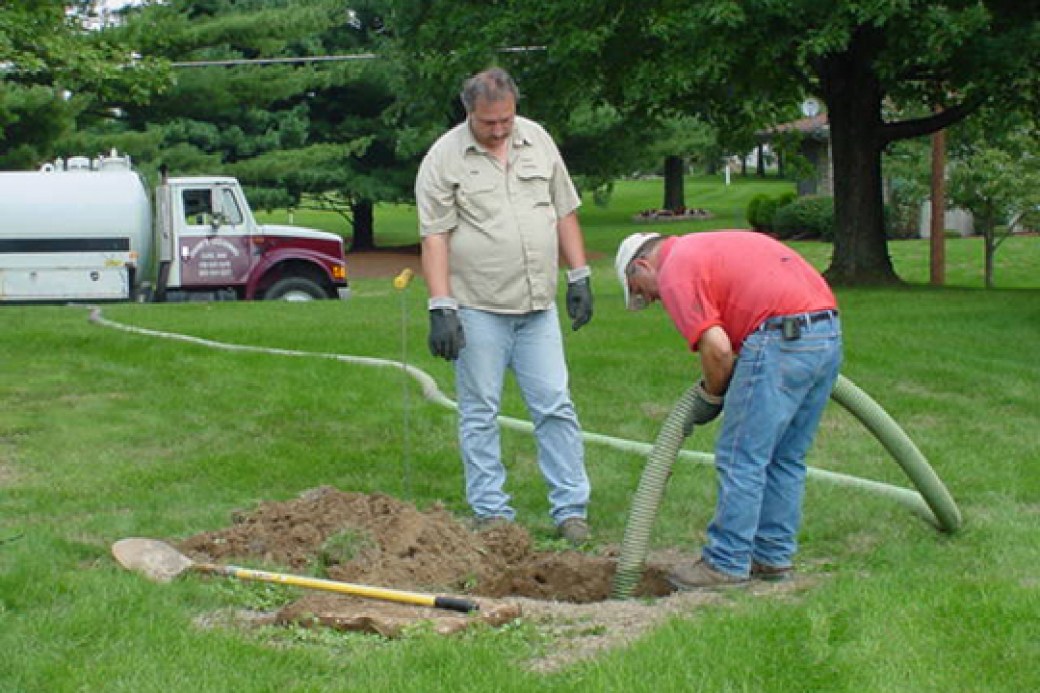You wouldn’t skip routine maintenance on an expensive car. Nor should you ignore the upkeep on your septic system. Replacing a failed septic system can cost as much as a new car, so you have a big incentive to keep your system in good shape.
Septic systems serve the same role as municipal treatment plants, just on a smaller scale. Instead of staff engineers and technicians to keep everything operating smoothly, there’s just you, the homeowner. As the superintendent of your septic system, you face a few key tasks.
Protect the Parts
Check the records that came with your house to find out where all of the components of your system are located, so you or your visitors don’t inadvertently ruin them. Never drive over the drainfield. Besides possibly cracking a pipe, the weight of a vehicle compacts the soil and makes it less able to absorb water.
Keep shrubs and trees well away from both the septic tank and the drainfield. Their roots can snake into pipes and clog them. But you should encourage grass on the drainfield because it absorbs water and prevents erosion—without digging its roots into the pipes.
Pump Periodically
With a standard system, call for a pump truck on a regular schedule (typically every three to five years). If you’re careful about what goes down your drains, you might be able to go longer between service calls, so ask your pumper for advice. If you have a maintenance contract (required with some systems), let the technician tell you when pumping is needed.
Pumping costs $200 to $400, if the lid is easily accessible. If it’s buried, you might pay another $100 unless you excavate it yourself. When the tank is empty, have it checked for leaks and have them fixed promptly. Also, ask about the condition of the baffles, which keep scum out of the inlet and outlet. If they’re missing or deteriorated, replace them.
Control What Goes In
Maybe you’ve heard that some materials help septic systems and some harm them. Here’s the truth about what’s good and what’s bad to put down the drain.
Too much water—from any source—can overload your system. Use gutters to divert roof water away from the drainfield. Install water-saving toilets and appliances, or at least fix toilet leaks and pace out laundry loads. A houseful of guests can also stress the system, so ask them to avoid long showers and full-throttle faucet flows.
Too many solids are bad, too; they pile up as sludge in your septic tank. If you have a garbage disposal, use it only to clean out the fine scraps that collect in a drain strainer. Otherwise, you could need to have the tank pumped every year or two.
Fats turn to scum in a septic tank. Instead if dumping them down a drain, skim off grease or let it solidify in the refrigerator, then toss into garbage—or your food waste recycling if that’s available in your community. Also consider a compost pile for food waste.
Chlorine bleach in moderate amounts isn’t as bad for a septic system as you may have heard. But even a little drain cleaner may be terrible. One study found that it took nearly two gallons of liquid bleach but only about a teaspoon of chemical drain cleaner to kill the beneficial bacteria in a septic tank.
In some situations, salty discharge released by water softeners can wreak havoc on a septic system. If the person who pumps your tank notices that the scum layer doesn’t appear normal, protect your septic system by piping the backwash water elsewhere if your health department allows this.
This can run from $10, if the discharge can be routed to a basetment sump pump, to $1,000, if you need a dry well (an underground pit filled with large rocks). Or, switch to salt-free water softener (about $1,000 or more).
Don’t waste your money on additives that claim to break down sludge in the tank and therefore prolong the time between pump-outs. Pump regularly instead. Some additives do nothing and others have bad side effects, such as loosening the scum in the tank so that it then clogs the drainfield.
Other Inspections
Walk across your drainfield during the rainy season. If you smell sewage or find that grass is growing especially fast and lush in one area, your drainfield could be clogging. Call in a septic repair company for advice.
If you have an alternative system with mechanical parts, filter screens, pumps, or other components that can fall out of adjustment, you need a professional inspection (about $100) at least once a year. Your local health department or state environmental agency may require you to take out an automatically renewing contract to make sure this happens.
